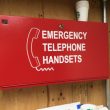Let’s get started
After the systems engineer has an understanding of the proposed land-mobile radio system user's needs, budget process and the available technologies, the next step starts the real engineering work, i.e., the radio frequency (RF) planning process. This section will introduce some of the fundamentals of RF engineering, but there is much more to the engineering process than just these fundamentals. We will cover more of the RF engineering items in later articles, but it is imperative that the reader understands these fundamentals first.
The RF planning process begins with an understanding of the customer requirements and ends with a decision that includes the technical requirements and financial constraints. In between, myriad design elements must be considered, including the following:
- Frequency band selection;
- RF link budgets, including RF coverage drive-testing;
- Regulations and technical capabilities of the repeaters, base stations and subscribers;
- Radio transmissions, including RF coverage planning;
- Radio site locations;
- Verification and testing of noise and interference; and
- Understanding of the receivers' ability to hear signals above the noise and interference.
The frequency band will have a major influence on the rest of the system design. It will dictate the type and size of the antennas, the choice for the transmission lines, the necessary height of the tower(s), the complexity of the radios, and the amount of interference that can be expected over the life of the equipment. In most circumstances, the range and reliability of the system will be based on the band that the engineer chooses for the system to operate on. (See sidebar.)
Another factor to consider when choosing a band for operation concerns interoperability with other units with which the radios must communicate. With the advent of software-defined radios — which identify and move to open frequencies without the user realizing it is happening — and multiband radios, the need to always use the same band as your neighbors or workmates has been lessened. The trade-off is the considerably higher price of the subscriber units.
The link budget takes into account all of the gains and losses experienced by the signal as it moves from the transmitter to the receiver; it takes into account the amount of power being transmitted, the circuit path loss, and the difference between the received level and the receiver's ability to hear a signal at that level. For instance, when the received signal level exceeds the receiver sensitivity and is above any noise and interference, then you have a viable working communications path. If the received level is below the sensitivity of the receiver, or there is detrimental localized noise and interference, then you do not have a viable communications path.
There are many elements of the radio link budget — both in the talk-out, or downlink, path and the talk-back, or uplink, path — to be considered. These include base station transmitters, cavity filter losses, coaxial transmission line losses, transmitter antenna gains, RF path loss, subscriber receiver antenna gains, coaxial transmission line losses, and the subscriber receiver's ability to interpret the signal over any noise or interference in the downlink path.
More specifically, in a typical radio system — conventional or trunked — establishing the link budget in the downlink path starts with the base station or repeater transmitter, coaxial jumper and the combining of multiple transmitters or cavity filtering to prevent transmitter noise and intermodulation. After the combiner or cavity filtering, the system engineer must take into account another jumper, the lightning surge arrestor, the large coaxial cable that runs up the tower or rooftop, yet another jumper, and finally the termination at the transmit antenna.
In the uplink path, the engineer first considers the transmitter power, any losses to the subscriber antenna, and the type and location of the antenna. Then there is the path loss, the base station or repeater receive antenna — either proceeding to a low-noise amplifier located with the antenna and/or a jumper, then proceeding to the large coaxial cable — the lightning surge arrestor, another jumper, a pre-selector filter, and finally the receiver multicoupler (if the system uses multiple receivers in the same band).
Balancing of the link budget between the downlink and uplink is critical to allow the mobiles and portables to have the same coverage in both directions, in order to prevent receiving a signal and not being able to return the call, and vice versa.
The transmitter power is the baseline part of the link budget. If you do not need to cover a large geographic area, then low-power transmitters will work well. But if you need to cover a large geographic area — or an area where you need quite a bit of signal due to obstructions attenuating the signal — then you need to start with a high level of transmitter power.
To further the discussion of link budgeting, we next focus on the individual components, starting with the base station transmitters, which are specified in watts — this needs to be converted to decibels using the equation, PdBm = 30 + 10 log Pwatts.
When a radio manufacturer submits its products to be type-accepted by the FCC or other regulating body, so that the product can be sold and used legally, the maximum and minimum power utilized by the transmitter will be taken into consideration. This means that any given radio transmitter cannot operate above, or below, a certain power level. The system engineer must know ahead of time, during the design phase of a project, what the transmitter power range must be before the equipment is placed into service, as the power level for a given radio cannot be varied by much.
The full transmitter power will not be the same as the power that is fed into the antenna. There will be losses caused by connectors, transmission line loss, duplexer or other filter losses, isolators, and any impedance mismatches. The actual transmitter power, which not only takes into account system losses but also gains, is referred to as Effective Radiated Power, or ERP.
In order to make up for system losses, the engineer can use a high-gain antenna such that the losses can be overcome, and in some cases, actually provide for a true gain of system performance. We will spend more time on antenna systems in a future article.
With advances in technology, and as the frequencies of operation expand above 1 GHz, antenna design engineers began to model devices such as parabolic reflectors using computer programs, as the standard dipole antennas did not lend themselves to the formulas unless a focus point was used in the design. These engineers started using the term Effective Isotropic Radiated Power, or EiRP, to describe the patterns and gains, but the technicians measuring the systems found that their levels were off by a factor of 2.1 dB lower than the engineers had stated.
In the ensuing years, the use of isotropic radiators has migrated to the LMR and cellular industries, where the manufacturers will give their specified antenna gains in decibels over a dipole and decibels over an Isotropic point in space. The non-technical individuals such as purchasing agents will think that it is better to buy an 8.1 dBi antenna over a 6 dBd antenna, where they actually are the same antennas with the same amount of gain.
The radios in the link budgeting can be used as base stations, mobile stations, repeaters, control stations, and portable stations. There are myriad antennas available for each type of station, and these all must fit into the system design. In addition, just as the antennas must be a proper impedance match for the transmitters, they also must be a good match for the receiving channel. If your receiver channel is far removed in frequency from the transmitter channel frequency, you might have a problem with the antenna having a poor impedance match at one or both of the channels. In addition, the gain of the antenna might be seriously degraded or become a loss from the incorrect spacing at the different channel frequencies. A well-engineered system always will have these parameters in the proper ranges for the given system.
The receiver portion of the radio system, including the study of noise and interference, is an important part of the link budget, and will be examined — along with antenna systems, RF coverage tools and drive test methods — in the next installment of this series.
Common Frequency Bands
The common bands for LMR systems in the United States are:
- High-frequency HF (3.0 MHz-30.0 MHz);
- Low-band VHF (30 MHz-50 MHz);
- Mid-band (72 MHz-76 MHz);
- VHF high band (138 MHz-174 MHz);
- 220 MHz;
- UHF band (380 MHz-470 MHz);
- UHF T-band (470 MHz-512 MHz);
- 700 MHz band (narrowband and broadband);
- 800 MHz;
- 900 MHz band;
- 2.4 GHz band;
- 3.6 GHz;
- 4.9 GHz band;
- 5.2 GHz;
- 5.8 GHz band.
Part 1: Class is in session: Basic LMR and FCC definitions
Part 2: Start at the beginning: Understanding LMR user needs
Part 3: The devil's in the details: Conducting a user-needs survey
Part 4: Decisions, decisions: Understanding the LRM procurement process
Part 6: The lynchpin: Receiver planning and installation
Part 7: Connecting the dots: How to connect LMR sites
Part 8: The next piece of the puzzle: Understanding dispatch communications
Part 9: Now the real work begins: How to select a suitable LMR site
Part 10: The bane of your existence: How to deal with RF interference
Part 11: Winning the battle: What causes radio frequency interference
Ira Wiesenfeld, P.E., is a consulting engineer who has been involved in the radio communications business since 1966. He is a senior member of the IEEE and has been a licensed amateur radio operator since 1963. He can be reached at [email protected].
Robert C. Shapiro, P.E, is the senior manager-systems engineering for PlantCML. He serves on the TIA TR8 committee as the TSB-88.4-C task-group chair and is a senior member of the IEEE. He can be reached at [email protected].

















